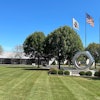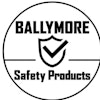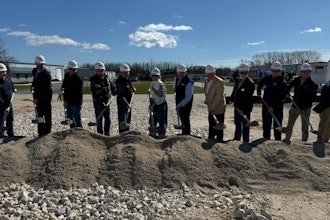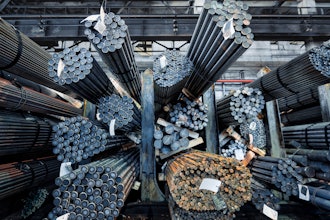Machinery can break down in extreme conditions so it only seems natural that employees might have cause to break down as well. As temperatures escalate, comfort tends to take a nosedive, dragging productivity and safety along with it.
The introduction of air movement by way of high volume, low speed (HVLS) fans helps combat these adverse conditions. C. Jason Hollan, manager of systems engineering at Big Ass Fans, answers some common questions regarding the benefits of air movement as a cost-effective solution to worker comfort and safety.
Considering there is a vast range of desired comfort levels, how does a facility manager determine the optimal comfort conditions for employees in a non-conditioned workplace?
The sensation of feeling comfortable is not just dependent on air temperature, although that is a strong contributing factor. Human thermal comfort takes into account numerous environmental factors including temperature, thermal radiation, humidity and air speed as defined by ASHRAE Standard 55-2010 (American Society of Heating, Refrigerating, and Air-conditioning Engineers), along with personal factors including metabolic rate and amount of clothing.
Studies indicate an average 2% reduction in work performance per 1.8 F temperature rise when the temperature is above 77 F. While this may not seem detrimental on an individual basis, this drop in employee productivity can add up to huge profit loss across a company.
How does elevated air speed provide comfort if not altering temperature?
When temperature and humidity rise, the body’s ability to cool itself decreases. As one might expect, reducing the amount of clothing to the extent possible will promote cooling. And while not typically an option in the manufacturing industry, reducing activity level helps as well. Perhaps the best solution, however, is applying gentle, non‐disruptive, non‐turbulent airflow from HVLS fans that promotes the body’s natural cooling process, helping to maintain occupant comfort even in hot and humid conditions.
How do HLVS fans work differently than typical small high speed fans?
Properly engineered HVLS fans take advantage of their immense size—not speed—to move massive amounts of air. When the airfoil length is doubled you’ve increased the surface area that those airfoils sweep times four. As the size gets larger, the amount of air the fan moves increases at a much faster rate than the amount of power it takes to turn it. So, with all things being equal, a larger fan, up to 24 feet in diameter, becomes more efficient. Additionally, AirFences installed along the airfoil redirect air that would otherwise slide off and be lost. This technology increases efficiency while contributing to a 28% improvement in coverage area. With the correct size, number and placement of fans, thorough air movement is achieved, eliminating any dead spots or stagnant air that might otherwise exist in a facility.
How can this type of environment be maintained as summer temperatures escalate?
In applications requiring cooling, fans operate between 60 and 100 percent of maximum speed during the summer months, improving comfort and productivity with an evaporative cooling effect mentioned above as well as the added effect of heat transfer – when skin temperature is warmer than air temperature. Although fans do not lower the temperature of a space, the perceived cooling effect can make a person feel up to 10 F cooler in non-air conditioned spaces.
How does air movement contribute to a more productive work environment?
If you’re in the industrial segment of our economy then you know the life blood of your business is productivity. Getting the most out of what you put in is the name of the game, and like a thief in the night, a hot, humid work environment can rob you of the very revenue you’ve worked so hard to resource.
Lost productivity is a double-edged sword; imagine a warehouse averaging 85 F during the four summer months. At 85 F, each employee loses 8.8% of their productivity – with 30 full-time employees at $15.00 per hour, $1500 is lost in weekly productivity. The total loss in productivity per summer comes to approximately $27,000 (not including the costs of inefficient cooling and worker comp claims due to heat stress). If air movement is incorporated into the space via HVLS fans, the warehouse will feel at least 10 degrees cooler – allowing the company to recover about two thirds of productivity lost without the fans.
To compound the issue, less productive workers produce fewer products. If you consider an assembly operation where workers assemble products worth $45.00 of revenue to the company at a rate of 14 per hour, then instead of each worker making 112 assemblies per day, they make closer to 100, at a loss of over $500 in revenue. It’s easy to see how this loss in productivity can ruin your summer financially.
How much energy is needed to run the fans and what sort of an impact will it make on a company’s utility bill?
Energy usage is dependent on the size and number of fans, horsepower of the motors, hours of operation per week. With typical hours of operation during the summer months, a 12- to 24-ft. HVLS fan uses, on average, 7.1 to 11.6 kWh of energy on a daily basis, far less than an air conditioning system, and far more applicable in most warehouse facilities.
How does the use of HVLS fans help reduce heat stress?
Heat stress is defined as a group of conditions that result from being overly exposed to or overexertion in excessive ambient temperatures, a common occurrence in industrial spaces during the summer months.
Working conditions at Top Notch Distributors in Earth City, Mo., were such that ice water stations and floor fans were scattered about the 60,000 square foot warehouse to help ease discomfort. On a 105 F summer day, Warehouse Supervisor Rich Stratmann climbed a ladder, thermometer in hand, up to the roof deck to see that the temperature had soared to 115 F within the facility.
The 24-ft. diameter HVLS fans installed produce a column-shaped jet of air roughly equal to the diameter of the fans. As this jet strikes the floor it spreads out in all directions, displacing the stagnant air and setting up a convection-type circulation pattern. Air from the floor level is moved out towards the walls or obstructions and then moves up back into the fan to be recirculated. HVLS fans provide up to a 10 F cooling effect, significantly reducing the heat stress on workers making their environment safer, more productive and more comfortable.






















